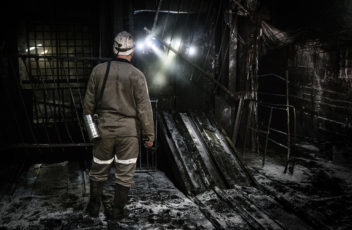Gas instead of coal is 50% better for the climate
We can do a lot to save the climate by switching from coal to natural gas. And we can shelve concerns about the negative climate impact of methane emissions from gas production, say researchers.
The need to phase out coal for the sake of the climate is obvious to many people. And if we were only dealing with carbon dioxide emissions, it would be a simple calculation.
Coal is the single biggest source of carbon dioxide emissions from human activity. Replacing coal with natural gas (which is a less carbon-intensive fuel) is one of the most cost-effective options for reducing short-term CO2 emissions.
At the same time, the global demand for coal is increasing (0.7 per cent in 2018, according to IEA statistics).
- You might also like: New study estimates carbon footprints for 13,000 cities
Climate effect of coal-to gas shift debated
Whether natural gas is better than coal has sparked much debate, not least due to recovery methods such as hydraulic fracturing, also called “fracking”, which is widely used in the United States.
Natural gas consists primarily of methane, a gas that has a much stronger climate impact than carbon dioxide. Concerns have been raised about possible methane leakage during the extraction, transport and processing of natural gas.

Coal is the single largest source of carbon dioxide emissions from human activity. The global demand for coal is increasing. Natural gas is a better alternative, researchers say. Illustration photo: Shutterstock
Some studies have shown that methane gas leakage zeros out the climate benefits in the transition from coal to natural gas. At the same time, there has been concern about the effect of short-lived climate pollutants (SLCPs), such as SOx, NOx and black carbon (fine-grained particulate matter), which are released to varying degrees from both coal-fired power plants and natural gas plants.
The climate impact varies greatly in different regions and in SLCP composition.
Now, a recent study using more advanced measuring methods shows that the coal-to-gas shift is not only central to achieving greenhouse gas reductions, but that the risk of methane leakage is considerably smaller than the climate benefits of such a transition.
“We’ve looked more closely at the implications of replacing coal with natural gas and considered the entire spectrum of emissions, possible methane leakage rates and other emissions – and used up-to-date climate indicators,” says Francesco Cherubini. He is a professor of industrial ecology at NTNU. Cherubini is also the lead author of the IPCC report Climate Change and Land.
“We present a solid case where we show that when we consider all the emissions in detail, from both short and long-term perspectives, the climate benefits from a coal-to-gas shift will be considerable,” he says.
- You might also like: Does green energy have hidden environmental and health costs?
Gas is part of the solution, but also a risk
Natural gas power plants are usually more efficient than coal-fired power plants. The study shows that as long as plants implement measures to limit methane leakage, electricity production from gas will reduce climate impacts by 50 per cent in the short term, and up to two thirds in the longer term.
The researchers point out that their findings show that a coal-to-gas transition is in line

Professor Francesco Cherubini is one of the study’s article authors showing that the shift to gas is a good direction to go with regard to climate challenges. Photo: Lars Bang / NTNU
with climate stabilization objectives for the next 50-100 years.
“Switching from coal to natural gas can help us with the transition to a low-carbon society and get us on the right track in terms of climate challenges,” says Cherubini.
“But we have to ensure that such a shift doesn’t delay the implementation of less carbon-intensive power sources,” he adds.
The researchers do not believe that natural gas is a permanent solution for the future.
“Natural gas has its place on the road to less carbon-intensive energy options,” says Cherubini.
“It’s a necessary transition phase until renewable energy sources and carbon capture and storage become commercially viable for large-scale implementation.”
The study was published in Nature Climate Change 22 April 2019.
You might also like to read Cherubini’s blog post.
Reference: Tanaka, K., Cavalett, O., Collins, W., Cherubini, F. (2019). ‘Asserting the climate benefits of the coal-to-gas shift across temporal and spatial scales‘. Nature Climate Change. doi: 10.1038/s41558-019-0457-1





